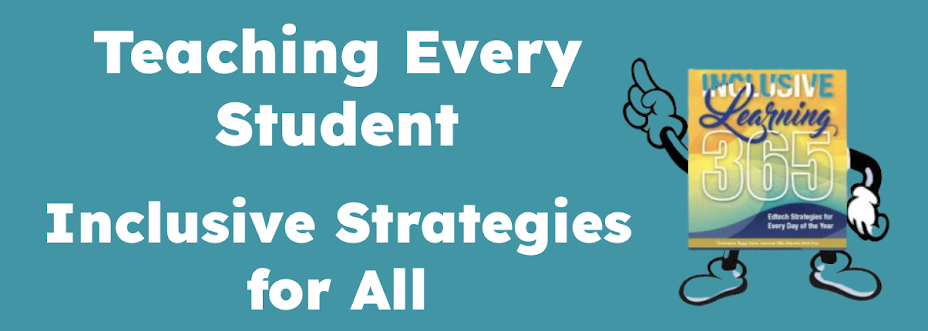Last week, the topic on the Twitter #edchat was differentiated instruction (archived here). Steven Anderson did a great job summarizing the discussion in his post, What Exactly is Differentiation?
A few tweets in particular resonated with me. One said, "I have 130 students - how can I differentiate for all of them?" (Good question. You can't). Another said, "Differentiated Instruction requires differentiated assessment." (Absolutely!) A third tweet pointed out the need to have students determine their own learning styles through the use of surveys or inventories.
Unfortunately, this was another missed opportunity to explore the tenets of Universal Design for Learning. Everyone knows the buzzwords of Differentiation Instruction, DI for short, or Understanding by Design, UBD, or Multiple Intelligences Theory. Where was the conversation about UDL?
When UDL principles are embedded proactively into the curriculum, differentiation occurs seamlessly. UDL is about multiple methods - of engaging kids, of presenting material to them and then giving students multiple ways to demonstrate what they have learned. When it is incorporated in the curriculum, there is no need for learning style inventories. There's no need for a teacher to feel overwhelmed because they have 25, 50 100 or even 130 students. It's part of the presentation, the engagement, the expression. It's all about offering choices to reach all the students in your classroom, every period of every day. The one size fits all approach never worked. Now there are more resources than ever before to help your students succeed.
It's so much easier than differentiation. And it reaches all learners. Why aren't you using UDL principles to reach every student?
Additional UDL Resources:
What is UDL?
UDL Guidelines (presented using UDL principles)
UDL Lesson Builder
UDL YouTube Channel
UDL For All Ning
Free UDL Tech Toolkit
